Learn about Heartleaf Philodendron plant care and a few different varieties of this super easy-to-grow houseplant. Perfect for plant lovers, especially beginners.
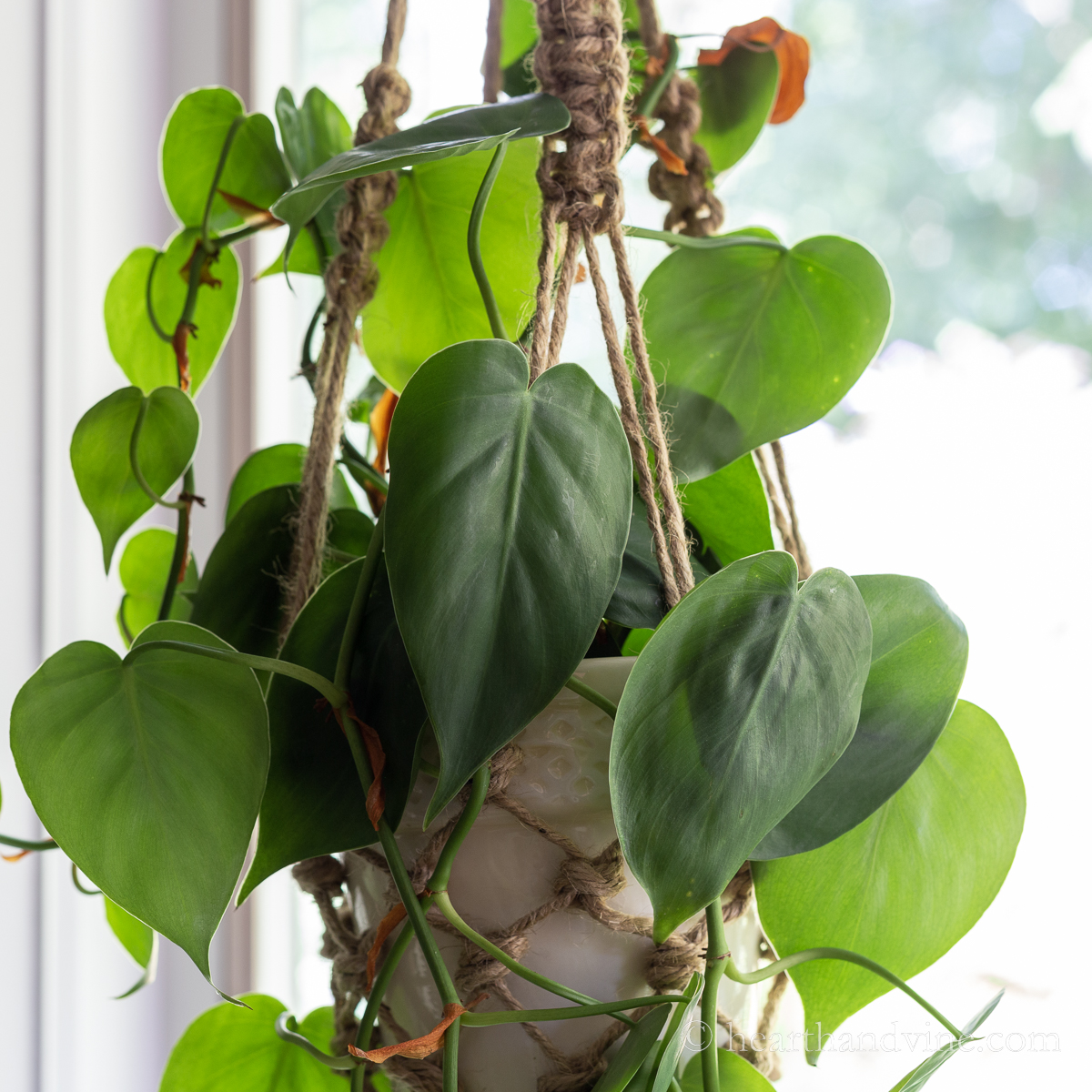
Heartleaf Philodendron — Philodendron hederaceum, synonymous with Philodendron scandens. Also known by the common name, sweetheart plant. Native to Mexico, South, and Central America, the West Indies, and the Caribbean, this beauty is a vining type of Philodendron and is definitely one of the easy house plants to grow at home.
This post contains some affiliate links (that means if you make a purchase after clicking a link, there’s no additional cost to you, but I will earn a very small commission. ) i.e. as an Amazon Associate, I earn from qualifying purchases. Click here to read my full disclosure policy.
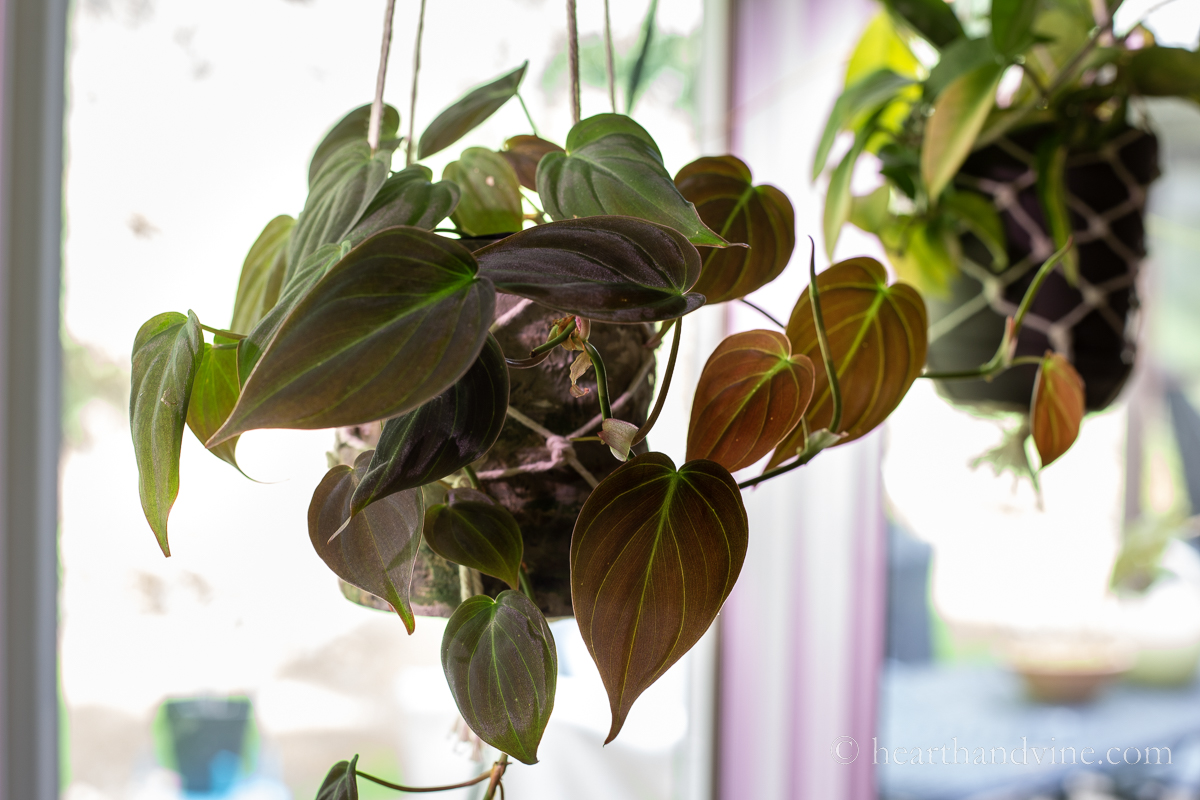
Heartleaf Philodendron vs Pothos
Often confused with pothos. Here are a couple of ways to tell the difference between the two.
- Leaf Shape - Pothos leaves are not heart-shaped but more teardrop shaped.
- Leaf Texture - Heartleaf Philodendron leaves and vines are thinner and more delicate than pothos vines.
- Cataphylls are distinct attributes of Philodendron plants. This is a sheath where new growth emerges. A cataphyll is a small, leaf-like protective part of the plant. As the vine grows it will eventually turn brown and fall off. In a pothos plant, the new growth starts from a previous leaf and simply unfurls.
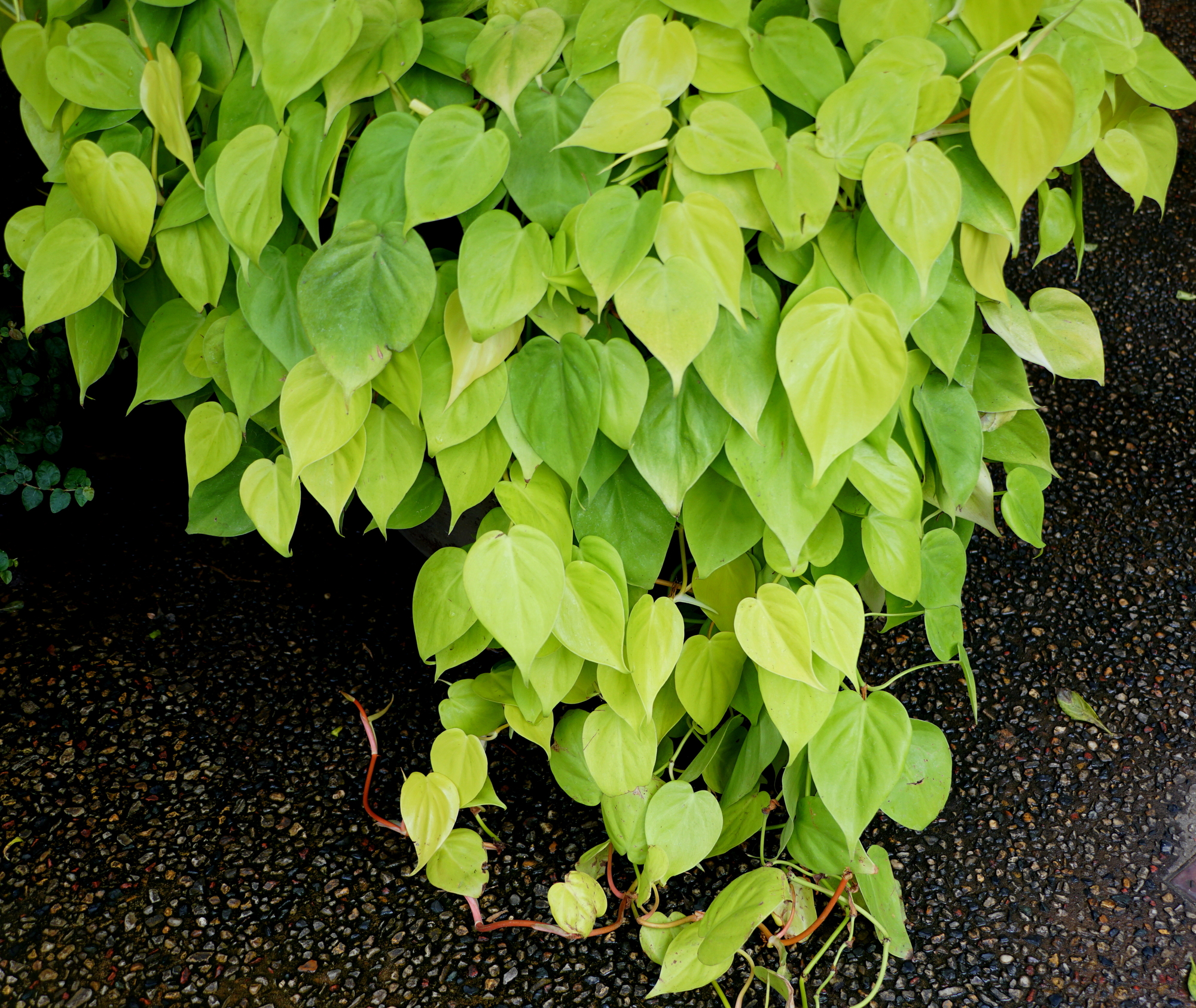
Basic Philodendron Plant Care:
- Light: Like many indoor plants they like bright indirect light but they will also do well in lower lighting conditions. However, they may grow a little slower in low light.
- Water: Wait until the soil is dry before watering on average every 1 to 2 weeks.
- Soil: Basic well-draining soil is best for any houseplant. Make your own homemade soil by adding a little perlite or peat moss to the ordinary potting medium.
- Fertilizer: Any average fertilizer will work for pothos plants. Fertilize every 1-2 months, less during the winter.
- Pruning: These plants are great climbers and produce very long stems. Pruning it from time to time will help the shape and give you more stem cuttings for propagation.
Heartleaf Philodendron Varieties
- Green: The most common. Mid-toned prolific green heart-shaped leaves.
- Micans: Beautiful dark velvety leaves ... start out bronze red underneath...
- Lemon Lime: Vibrant light green almost neon-colored leaves.
- Brasil/Brazil: talk about Gabby and cream splash here
- More Variegated Rare Varieties: Silver Stripe, Rio, Cream Splash, and Gabby
How to Propagate Heartleaf Philodendron
These plants can easily be propagated in water. Simply place a stem cutting with 1-2 leaves and at least one leaf node (a bump on the stem) in a glass or vase of water. Change the water weekly and your cutting will grow new roots in a few weeks. At that point, you can put it in a small pot or let it live in the water.
You can also propagate cuttings in potting soil, covering as many nodes as possible with dry potting mix in a pot with drainage holes and waiting for them to root. When roots begin to form, water the plant normally. Too much water may cause root rot and the leaves will turn yellow and drop off.
Safety Note:
All Philodendron plants are toxic to humans and pets. They should be kept out of reach on a high shelf or in a hanging basket. However, if you notice vomiting or excessive drooling your pet may have ingested some of the plant. The sap may cause irritation and swelling to the lips and tongue and should be examined by a vet.
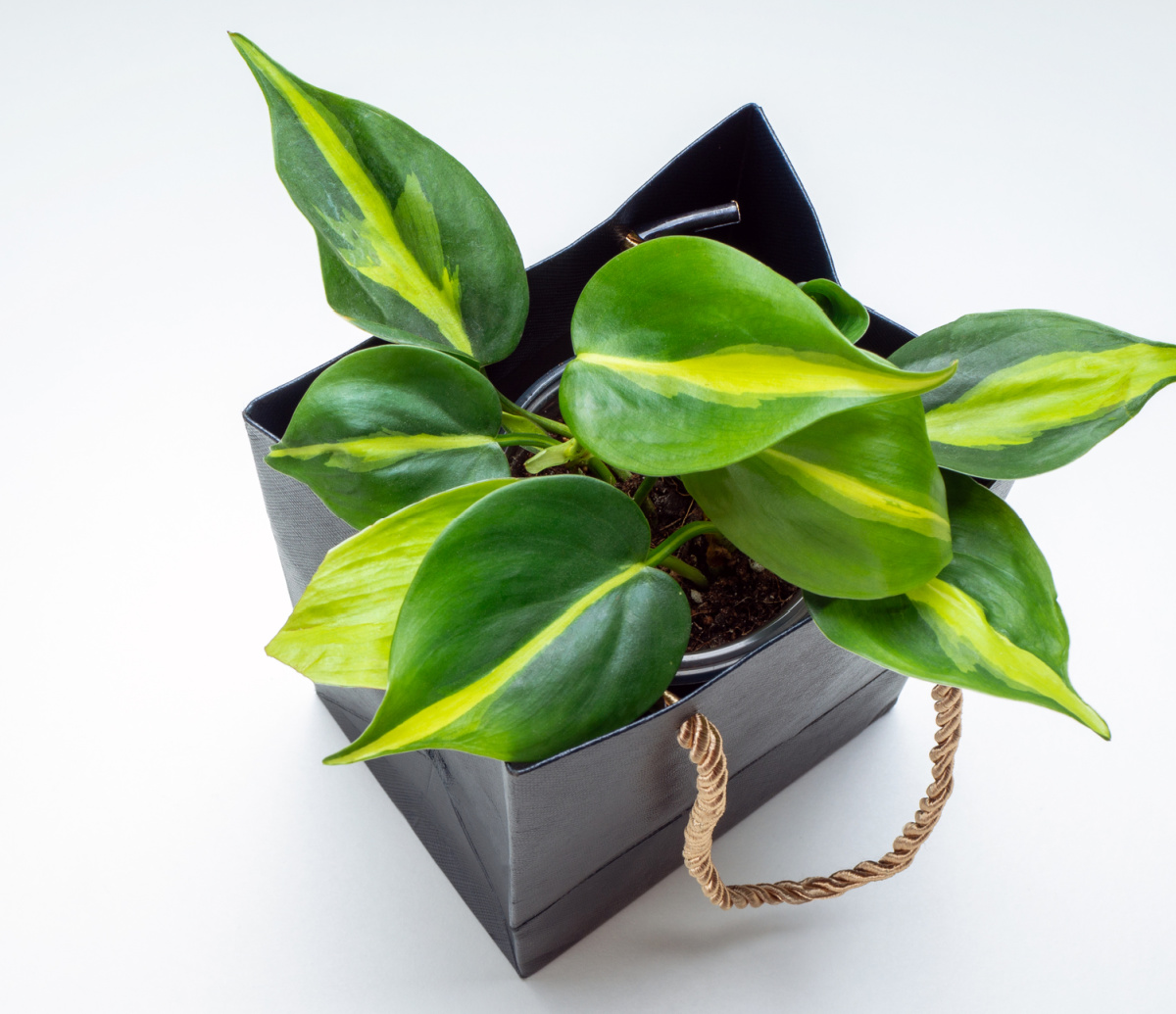
If you're just getting started with houseplants or even if you're a veteran, the heartleaf Philodendron is an easy beautiful plant that should be on everyone's list.
More Easy Houseplants to Grow
- Pothos Varieties and Plant Care
- Pilea - The Friendship Plant
- String of Hearts
- Ruby Cascade
- Monstera deliciosa
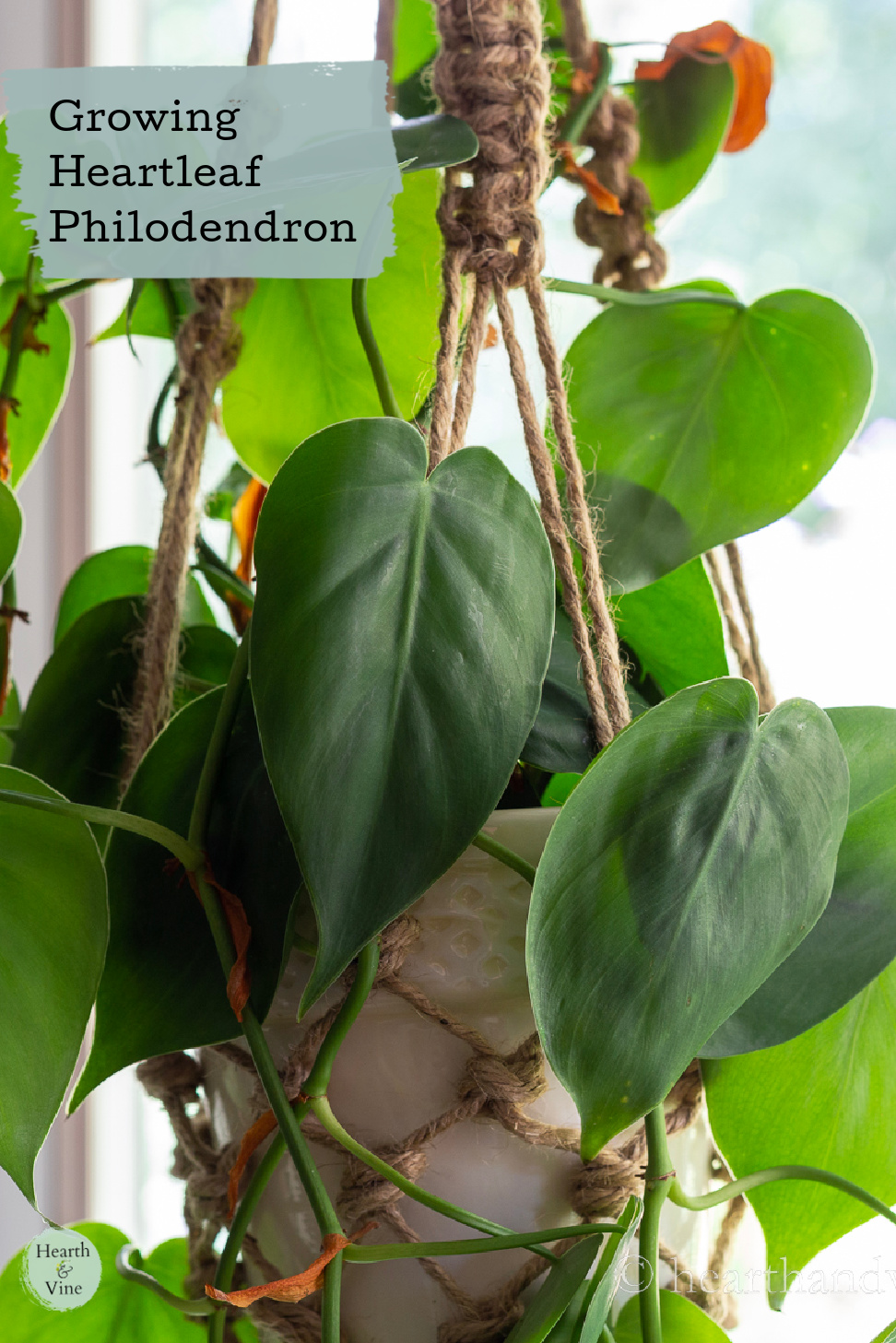





Leave a Reply